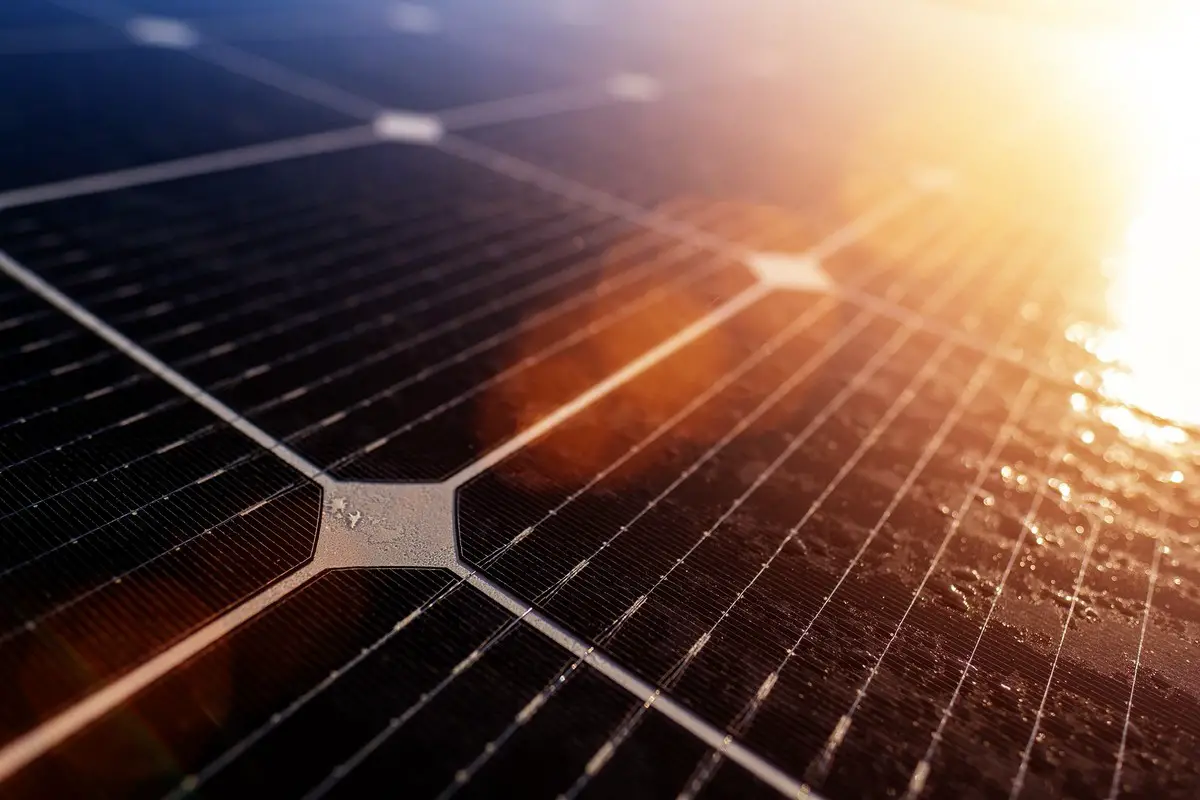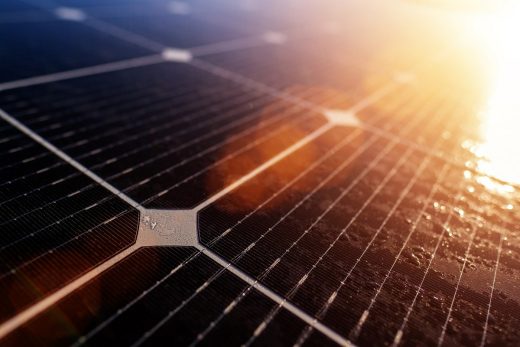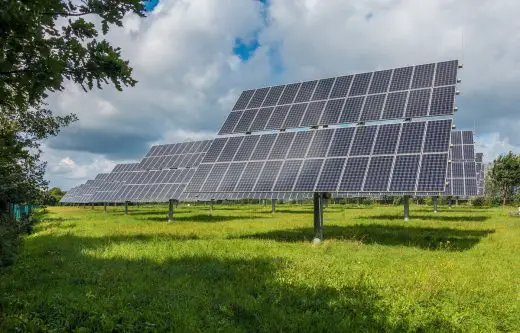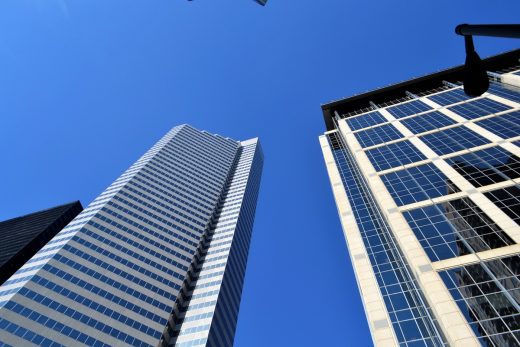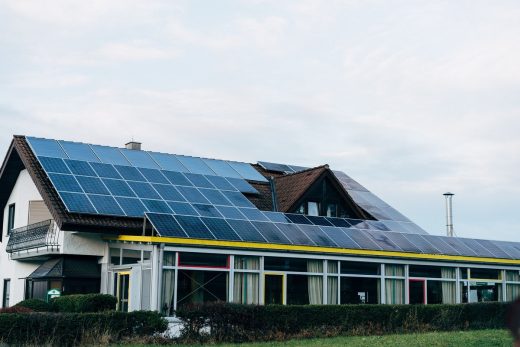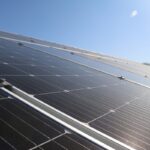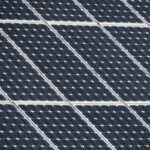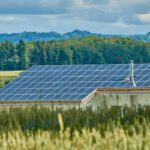Rise of solar power in sustainable architecture guide, Photovolataic renewables save money advice, Building PV electricity
Rise Of Solar Power In Sustainable Architecture
14 May 2023
When the chief economist of a global oil company warns businesses are on a dangerous path, it would be wise to listen. In 2019, BP’s chief economist stated that the world was on an unsustainable path.
Fossil fuels are disappearing. Yet, energy demand has never been higher. It is generally accepted that fossil fuel use needs to be tackled. And emissions curbed.
The construction industry and architects have a responsibility to create smarter buildings that impact the environment minimally. In fact, architects have never had a better chance to design smart, sustainable buildings.
What is sustainable architecture?
Green or sustainable architecture is building design that causes minimal impact on the environment. Sustainable house designs would seek to limit the carbon footprint during construction, and afterward once occupied.
Sustainable architecture might incorporate green spaces and nature into the design. Green roofs for instance are a simple way to bring nature into urban districts. Biophilic urbanism is the philosophy that people need to be connected to nature. Therefore urban areas are being designed to include waterways and greenspaces.
Sustainable architecture might use smart materials, and incorporate renewable energy sources. Smart Solar Energy in Medford Oregon is just one company installing PV systems into new home designs to make them greener. Energy efficiency is a big part of sustainable architecture, and sustainable design takes in many aspects including building orientation.
The orientation of a building is as much a part of sustainable architecture as the materials used are. A building can make use of free heating by absorbing the sun’s rays. And using materials with thermal mass such as concrete allows buildings to store heat.
Why is solar being incorporated into sustainable architecture?
The construction industry creates large amounts of carbon emissions. 39% of all carbon emissions come from the construction industry. There is a huge need to offset this, and ideally achieve net zero.
Construction causes carbon emissions in the range of 15 tons per new home. But, in some cases, new builds can cause 100 tons of carbon to be emitted throughout the construction period. This can be offset through the use of green energy.
If solar is used in a new home then over time carbon emissions from construction will be offset. The popularity of home solar is growing. Therefore, it makes sense that solar should be used in sustainable architecture.
Europe, China, and the US have invested strongly in solar energy. These countries are heavily invested in renewable energy including wind and biomass fuels. But, for homeowners, solar power is perhaps the most accessible option.
A truly sustainable home design could be aimed at being totally off-grid. A clean energy source and an off-grid water system would be needed. Heating, ventilation, and lighting would all need powering.
Next are some examples of how solar is being used in sustainable architecture and home design.
PV solar panel installations
The most obvious way solar is used is from PV panel systems. The EIA reports that around 3.7% of households had solar in 2020. However, due to tax credits and incentives, PV installations are on the rise.
The gains from using solar energy in a home are clear. PV panels last decades now, and will pay for themselves in just a third of their lifespan. Solar power reduces utility bills. And solar power is far better for the environment than any fossil fuel. The majority of electricity is still generated through fossil fuels, therefore solar is cleaner.
And if an off-grid system is installed, solar gives independence to homeowners. Yet, many people have been reluctant to install solar panels due to the cost, and aesthetic reasons. Sustainable architecture and design can assist in both these areas with something called BIPV.
Building-integrated photovoltaics
BIPV is a design process that allows PV panels to be incorporated into a building’s structure without affecting the aesthetics. BIPV allows solar panels to be installed without being obvious.
For instance, PV panels might become part of the facade and resemble reflective glass. Or PV panels may be hidden on roofing systems as is standard but far from visible. Integrating solar panels into new building design means other materials can be replaced.
External walkways or balconies can make use of PV panels as barriers. In this case, the PV panel would be structured as a parapet. This seamless design would avoid the problems associated with unseemly PV systems.
As for the cost, if solar panels were incorporated into new home builds, there would be no cost to consider for the homeowner. Already many places such as Tokyo and California are making solar panel installation mandatory. If solar was installed as standard in new home construction, it would remove the worry of cost.
Harnessing solar without the use of PV panels
Throughout history, the sun has been used in many ways. Ancient communities worshipped the sun. Others discovered how to tell the time from the sun. While countless people have used the sun to begin a fire and keep warm.
Now, clever tricks such as solar composting are being used for sustainable gardens. And architects are using the sun to make smarter building designs.
Passive solar design
Fossil fuel usage is still unacceptably high. Around 83 percent of the world’s energy consumption comes from fossil fuels. Positioning buildings to make maximum use of the sun’s rays means homes will require less energy.
Smart architecture and home design can harness the sun’s energy and make homes more efficient, and sustainable. To do so, the building’s orientation, positioning, and layout need to be considered.
Thermal mass materials are needed to best absorb and store heat. Bricks, tiles, and concrete are all good materials for passive solar design. Windows and ventilation need to be planned carefully too. But, when done correctly, passive solar design reduces heating and cooling needs.
Solar shading
This is another system to make use of the sun without PV panels. Solar shading is a way for buildings to capture natural light and heat, and minimize the need for electricity.
Similar to passive solar design in that the building needs to be planned carefully to benefit from the sun. Fixed solar shading incorporates window recesses, balconies, overhangs, and natural objects such as bushes and trees.
Both solar shading and passive solar design can be combined with PV systems to increase energy efficiency in homes and commercial buildings.
How can solar power be used in a sustainable home?
Sustainable architecture can make great use of BIPVs and passive solar design. Solar power can also be used to make a home sustainable in other ways. A sustainable home design might incorporate some or many elements powered by PV panels.
Below are some ideas for incorporating into a sustainable home design.
Solar ventilation and solar AC
HVAC systems for cooling and heating use up huge amounts of energy. Air conditioning alone accounts for 6% of all electricity that is generated in the US. Therefore, building design impacts energy efficiency greatly.
If AC could be powered by solar, $29 billion would be saved each year. And solar ventilation can be used for preheating vented air to warm a home. Both ventilation and AC are essential in most parts of the US and could be powered by solar.
Solar appliances
Not an architectural concern as such. However, appliances do need to be considered when designing a home. Solar appliances are becoming more popular. Solar fridges would require batteries to store energy as solar distribution is not uniform throughout the day, or available at night.
But, despite some limitations, solar fridges are being used in homes as well as camps now, and for more serious concerns. In countries where electricity is not always readily available, solar fridges are used to store medicines safely.
Solar appliances would appeal to anyone designing an off-grid home where reliance on utilities isn’t wanted.
Green roof systems and gardens
One of this year’s architectural trends is incorporating nature into urban areas. Green spaces help to reduce temperatures and improve air quality. Where space is restricted, green roofs are the perfect way to make architecture more sustainable.
Solar panels can be incorporated into a roof garden. And with clever design, the PV panels can be less obtrusive.
Solar powered pumps
If a home is to be truly sustainable, then it should use as many renewable resources as possible. This can mean the use of a well or rainwater.
A solar pump can be used to irrigate gardens and grow vegetables. And any water features would be more eco-friendly if powered by solar. For those who truly want to be off-grid and sustainable then solar disinfectors can make rainwater good for washing and drinking.
Solar charging stations
A sustainable home wouldn’t be complete without green transportation. Architects need to consider how people intend to live now and in the future. Designing a car space isn’t enough. Sustainable house designs will have to include charging stations for electric vehicles. And these should be powered by renewable energy.
Rise Of Solar Power In Sustainable Architecture Summary
For architecture to be sustainable it needs to have as little effect on the environment as can be. Construction unfortunately causes carbon emissions. However, the damage can be lessened by using green energy.
BIPV systems are an important part of sustainable architecture too. As are such methods as passive solar design. Architects can harness solar power through PV panels seamlessly incorporated into structures, and also through planning of homes.
Further on from architectural layouts, homeowners can add solar power to irrigate vegetable gardens, and to power EVs. Through thoughtful design and solar, carbon emissions could be cut massively, and billions of dollars saved.
Comments on this guide to the rise of solar power in sustainable architecture article are welcome.
Solar Panels Articles
Solar Panels Posts
How architects implement solar panels in design
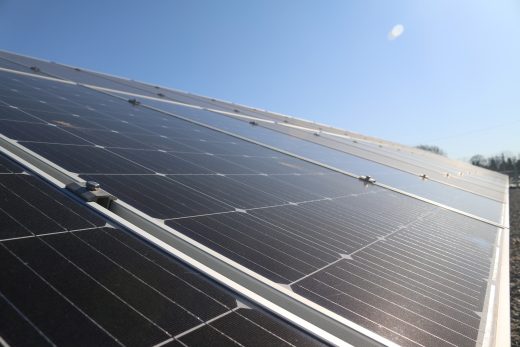
image source : pixabay.com
DIY Solar System: how to install solar panels
Types of roofing for solar panel installation
Installing Solar Roof Ventilation in Your Home
Building
Residential Architecture Articles
Comments / photos for the Rise of solar power in sustainable architecture advice guide page welcome

